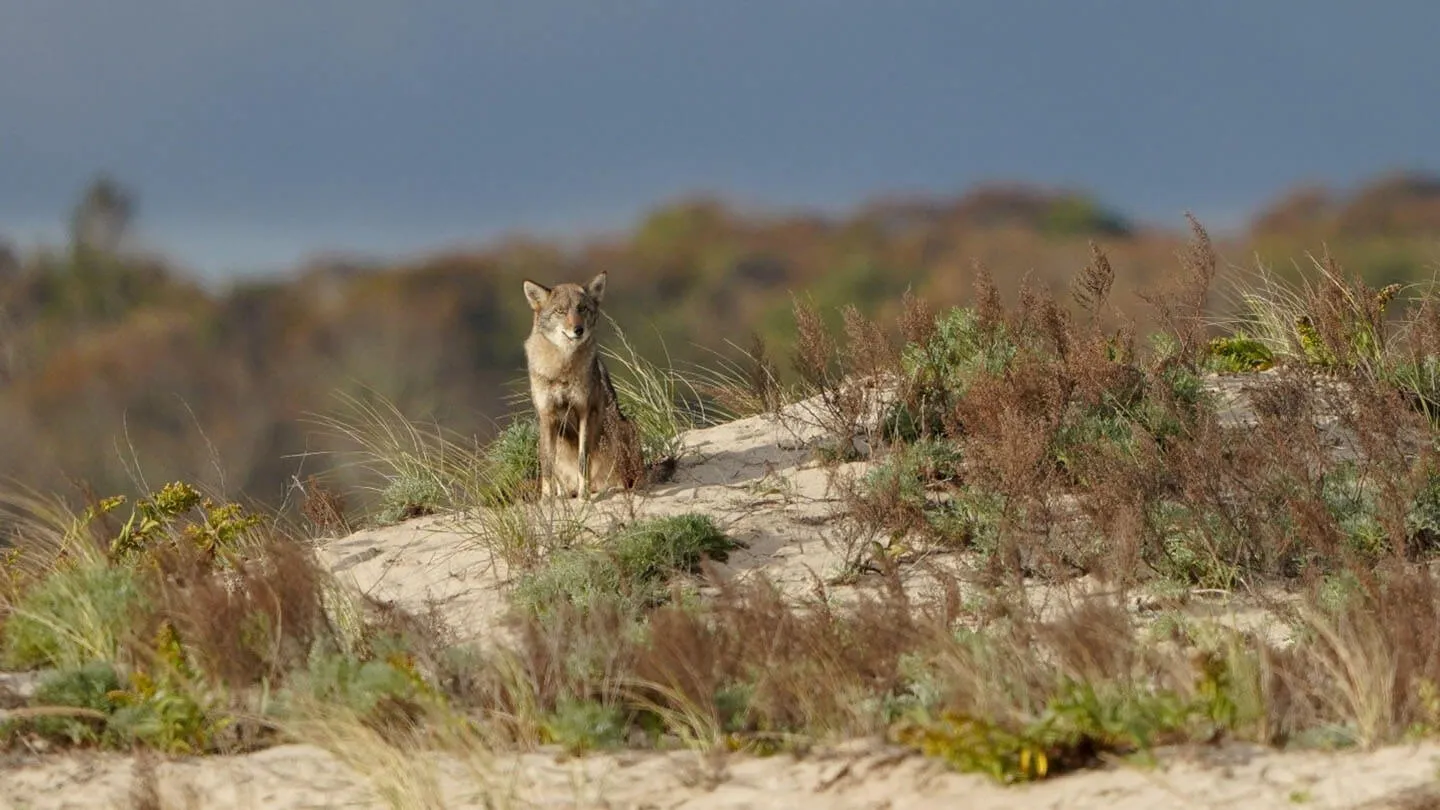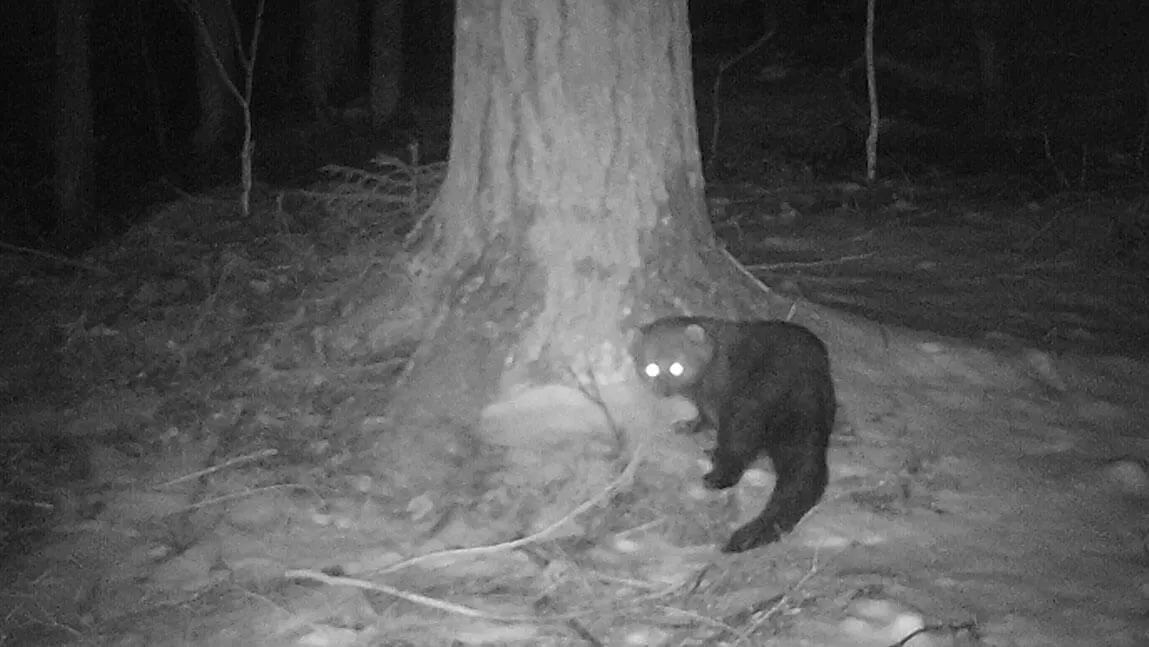In folklore, coyotes are often depicted as intelligent and troublemaking beings. In the wild, coyotes are highly opportunistic and adaptable, allowing them to live nearly anywhere—like us.
“Coyotes are incredible survivors,” says Jed Murdoch, a wildlife biologist at the University of Vermont who led a recent study of coyotes on Cape Cod National Seashore. “We have gone to war with coyotes, and they have survived. Wolves haven’t, but coyotes have.”
Coyotes have a capacity to adapt to new environments and constraints, including efforts to cull their numbers. Coyotes have thrived, in part, because humans have thrived. Wherever we altered the landscape and removed top predators, coyotes have exploited these gaps in the ecosystem. In the 1800s, mountain lions and wolves were hunted to extinction in the Northeast, leaving a hole these wild canids easily filled.
“They really evolved on the prairie, in the Midwest,” Murdoch says. “ … In the early 1900s, we started to have this gradual eastward expansion of their distribution.”
As coyotes spilled into upstate New York and filtered across New England, they moved into areas wolves and mountain lions once occupied and made themselves at home.
“Now they are just about everywhere in the East,” says Murdoch.
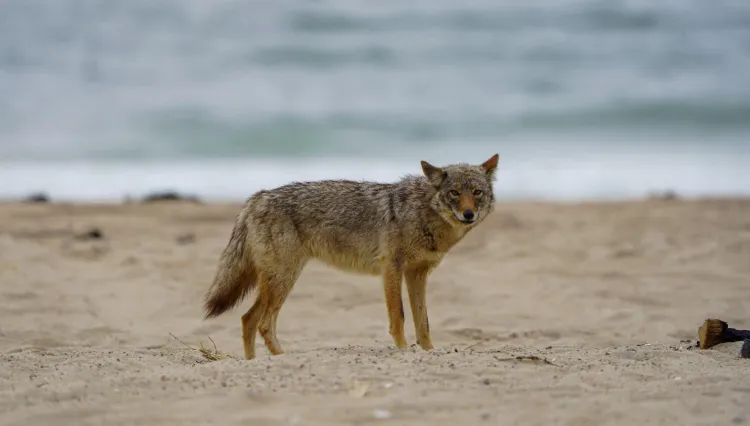
Tracking a new arrival
Coyotes arrived on Cape Cod around the 1970s.
For a long time, much of what was known about them was anecdotal, explains Kelly Medeiros, a natural resource specialist at the National Park Service (NPS). The agency manages the 40,000 acres of beaches, marshes, and forested land on Cape Cod National Seashore and wanted to study the coyote population to better assess the risk they pose to threatened shorebirds including the piping plover and least tern.
“We have lot of things that can eat them—fox, crows, any avian raptor,” Medeiros says. “Other places struggle with rats, but … most predation of the shorebirds is coyote and crow. And those [figures] are based on tracking; it’s not just guessing.”
“Coyotes are incredible survivors. We have gone to war with coyotes, and they have survived. Wolves haven’t, but coyotes have.” - Jed Murdoch
A 2019 assessment for managing the piping plover, a federally protected species, reviewed potential lethal and nonlethal methods to managing predators. The NPS has refrained from using lethal options because many questions remain unanswered. That is how Koryna Boudinot ’24 and Carolyn Hanrahan ’24, recent graduate students at the Rubenstein School for Environment and Natural Resources, came to trek over 200 miles in 2022 and 2023 searching for coyote scat (or droppings) and the data it could reveal.
Understanding how many coyotes there truly are on the Cape and which habitats they used was important, Medeiros explains. “What that means for us is a question for the future.”

An already burdened population
In early spring, NPS monitors wait for piping plovers to arrive on the National Seashore for nesting season. They comb the beaches searching for scrapings in the sand and active nests. Occasionally biologists will erect small metal exclosures around nests they deem particularly vulnerable.
“It is kind of a tricky situation because we don’t want to provide a large beacon for predators to come to,” Medeiros explains. “Coyotes use beaches like highways. … They have a ton of food availability for them on that open stretch of sand so they can still disturb the behavior of birds or any nesting shorebird that relies on them.”
The effort is called intensive monitoring for a reason.
“The park essentially monitors the fate of every single egg on the seashore,” explains Koryna Boudinot, who spent two summers as a technician on the National Seashore. “That is a huge task, and it involves going around every day to track the birds.”
This practice has likely protected the piping plover from disappearing altogether. Once common, the birds were nearly hunted to extinction in the early 1900s for their feathers. They faced additional strain as development along Cape Cod diminished their breeding habitat. And more people on the beaches means more disturbance. The arrival of coyotes potentially adds one more strike against an already vulnerable species.
“It can potentially perpetuate this extinction vortex,” says Boudinot. “It is just another pressure. The piping plovers are really sensitive to landscape change and recreation. There are just so many pressures and you introduce this top predator into this small landscape …”
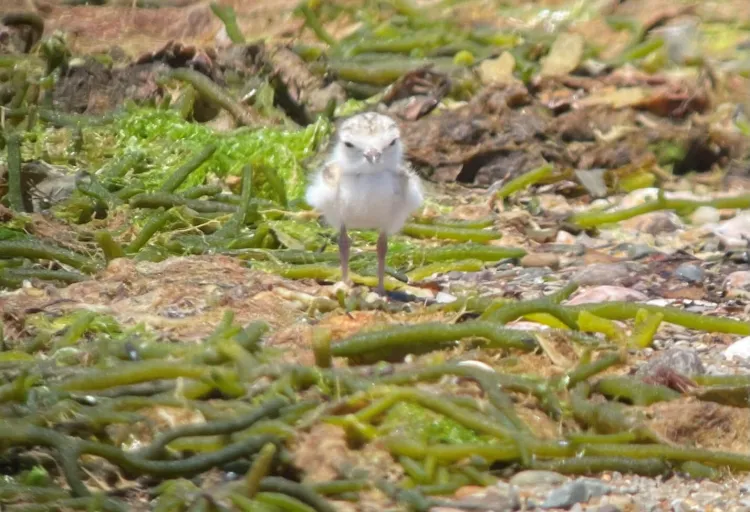
While piping plover numbers on the National Seashore have increased in recent years, productivity remains problematic. Each nest typically contains four eggs. The goal for protecting piping plovers is for 1.5 chicks to survive despite the obstacles they face from high tides washing away nests to disturbance from humans, their pets, and wildlife—any of which can cause nest failure.
“With hundreds of people on the beach, anytime the birds aren’t getting to the water or getting to their food it causes problems for them,” Medeiros says.
The main risk to nesting shorebirds, however, is predators. They scan the beaches for leftover trash, animal remains that wash ashore, and nesting birds. One day in early May, 15 nests were lost to predation. Most birds will lay another clutch and keep trying throughout the summer. Then in the fall they move on. Because while mobile, the species can’t just change millennia of breeding behavior overnight.
“There is no other place that a plover can go to nest and be successful,” Medeiros says.
Counting coyotes
While monitoring shorebirds on Cape Cod, Koryna Boudinot often spotted coyotes swimming across inlets or wandering the beaches—a potential management concern for shorebirds protected under the Endangered Species Act.
With coyote sightings common across the National Seashore and reports of people feeding them at popular beaches, NPS officials noted the potential for human-wildlife conflicts and wanted to understand just how many of the wild canids were in the region. They were awarded a grant from its Division of Inventory and Monitoring Program to find out.
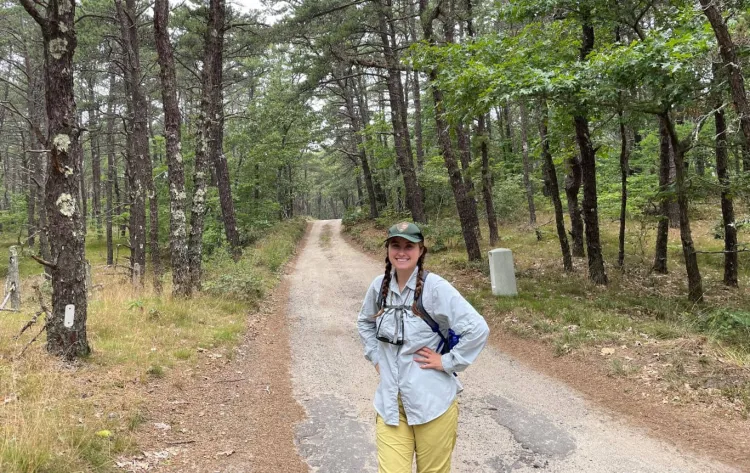
“We used a noninvasive genetic sampling approach, which is why we collected scats of the coyotes instead of capturing them and collaring them,” says Boudinot. “It’s really fascinating what we can learn just from scat.”
The method allows researchers to gather genetic information with relatively little effort or stress on the animals, model species abundance, and create a snapshot of their diet. By reconstructing family trees from the scat, Boudinot estimated between 70 and 90 coyotes live on the National Seashore and easily navigate getting on and off the peninsula despite a canal separating it from the mainland.
The data showed the seashore’s coyote population is “healthy,” meaning they are widespread, genetically diverse, and have a diverse diet. Coyotes were found in all habitats from dunes and beaches, forested land, to developed areas. Some might argue the population is too healthy for the narrow peninsula.
“One indicator is to just look at the density that we found,” Boudinot says. “It is comparable to other parts of mainland Massachusetts. … On the Cape, it’s such a unique landscape and it has so many different pressures with managing park visitors and also federally protected species, it’s really a complex conservation problem.”
Managing the National Seashore is not a simple task. The mission of the NPS involves providing access to and protecting the needs of many different species who use its natural resources, including the prey and the predators. The UVM coyote study provided a needed baseline for the Park Service to determine how to monitor, manage, and educate the public, Medeiros says.
“I think that is a key piece,” she says. “We were able to share this with people. It solved some myths where they thought that domestic dogs and coyotes inbreed, and they didn’t find that in our genetic study. There is just a lot of information there that was pretty eye opening.”
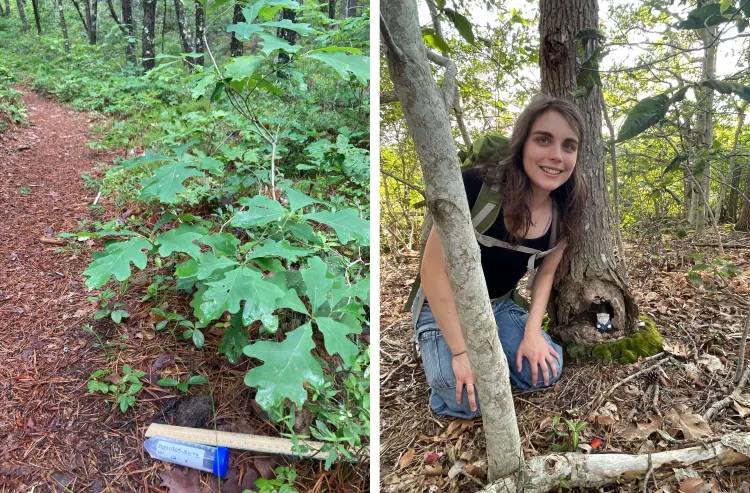
Decoding the coyote diet
Coyotes have long been suspected of preying on shorebirds and NPS monitors have witnessed predation events. This led UVM researchers to determine if shorebirds are a significant part of the coyote diet. The UVM researchers used metabarcoding to genetically test and sequence the scat to identify strands of animal DNA found inside hundreds of samples.
“It was a very clear answer,” says Carolyn Hanrahan, who performed the diet analysis.
Not one shorebird was detected. Instead, the metabarcoding showed coyotes have a varied diet with 27 distinct vertebrates found from small mammals to whales. The primary species identified include beef, pork, and chicken—foods they presumably acquired from humans either from trash or through other means—as well as white-tail deer.
“It’s a pretty significant variety of food sources,” Hanrahan says, “and it's also kind of interesting because we know that coyotes are omnivores. They eat a fair amount of plants, but we didn't capture that in our study because we specifically used vertebrate primers for the genetic analysis.”
She hopes the findings reduce some suspicion of the coyote population, at least when it comes to consuming federally listed shorebirds.
“Maybe there are some rogue instances but it's becoming increasingly clear that it's not a common occurrence,” Hanrahan says.
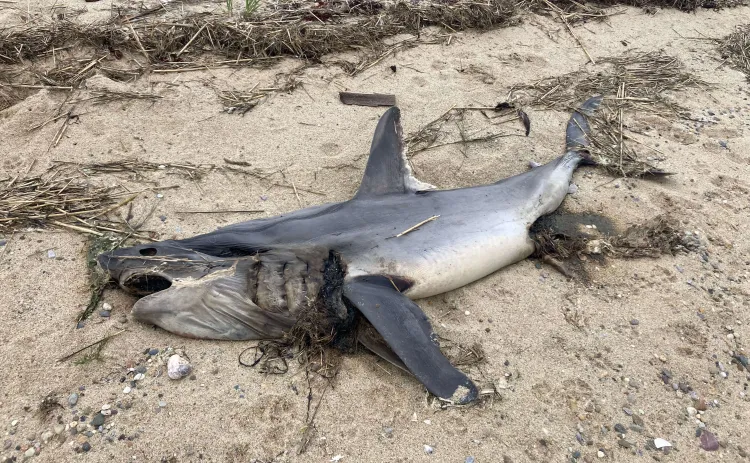
But while there was no trace of endangered shorebirds, the analysis did reveal other species of concern. About 40 percent of samples collected in the summer contained New England cottontail rabbits—a species in severe decline across the region—and small amounts of Eastern spadefoot toads, which are considered threatened in the state. Both species have dwindled over the decades due to habitat loss, however, the prevalence of cottontails in the coyote scat suggests they may be more abundant on the National Seashore than previously understood.
This raises new questions: are coyotes a potential threat to the recovery of other species of concern, and if so, what do we do about it?
For Medeiros, this unexpected finding warrants additional study, if it can be funded, she says. “This gave us extremely solid baseline to be able to provide a researcher or someone who is looking into the species of where we go from here.”
The risk of change
Change, and adapting to change, is natural in ecosystems. What isn’t natural is the speed at which humans have forced change onto so many species around the world.
“Disturbance is part of ecology,” says Noelia Barrios-Garcia, an ecologist at the University of Vermont who studies how invasive species and climate change—and often both together—can alter natural ecosystems. “And extinction is part of it. The question is how different are things going to be with this rapid change?”
Barrios-Garcia advises national parks in Argentina on the impacts of invasive species such as wild boar and introduced deer on native populations. She served as Hanrahan’s graduate advisor on the coyote project and notes the complexity of the situation.
“It’s a very complicated case,” she explains. “Coyotes are native to the United States. They are what we call native invaders.”
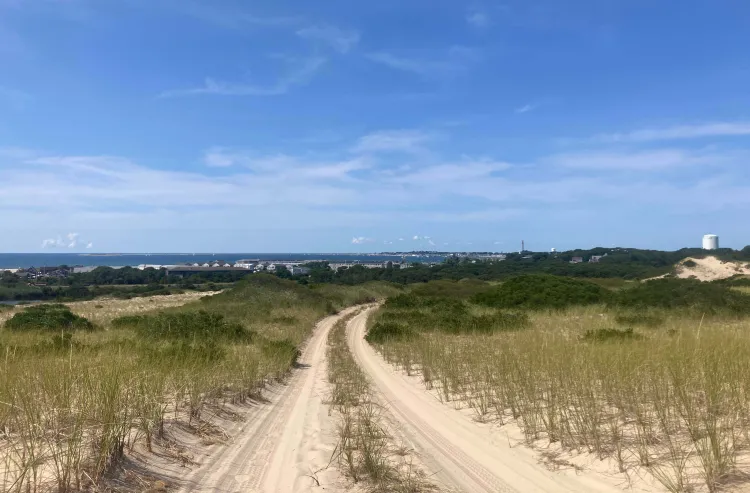
Coyotes are native to the Great Plains. They’ve expanded their range because humans removed top predators that kept their populations in check. But coyotes and invasive species exhibit similar traits that make them well suited to survive.
“They have high reproductive rates, they have generalist diets, and they reach sexual maturity rather quickly,” Barrios-Garcia says.
Coyotes are also resilient to variable environmental conditions. The traits that enable highly adaptable species like coyotes to rapidly expand into new territories may pose a risk to species already there.
“I am an ecologist,” Barrios-Garcia says. “I know what is at stake if you don’t manage them. One invasive can change the community.”
She points to the fate of Dromiciops gliroides, a tiny nocturnal marsupial in Argentina and Chile that is fading from the landscape. The forest understory is changing as invasive deer browse on young trees and force the tree-dwelling marsupial to forage on the ground where it becomes easy prey.
Determining what to do with a native invasive is complicated, Barrios-Garcia says. “For an exotic species, it would be easier.”
